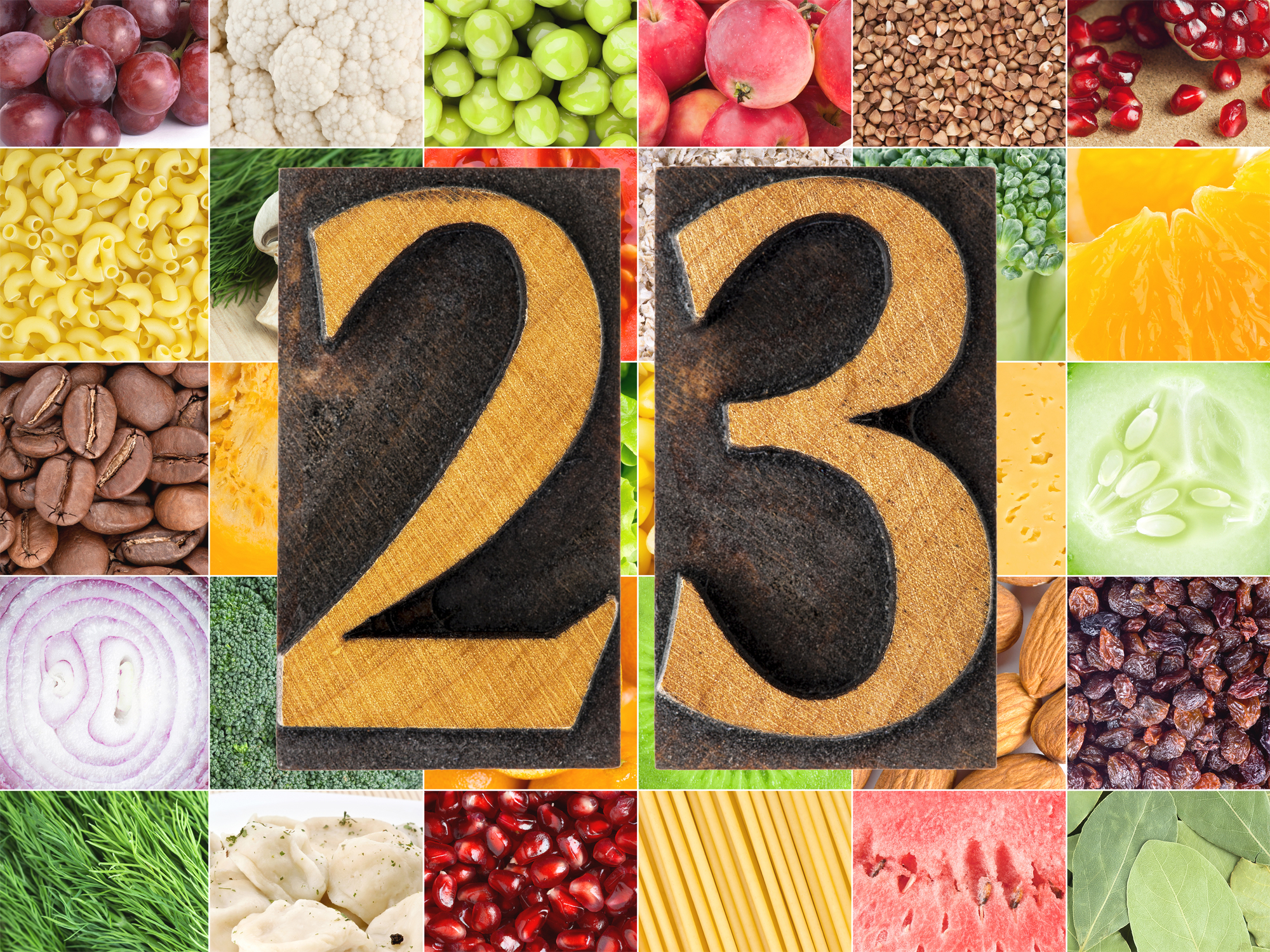Get Easy Health Digest™ in your inbox and don’t miss a thing when you subscribe today. Plus, get the free bonus report, Mother Nature’s Tips, Tricks and Remedies for Cholesterol, Blood Pressure & Blood Sugar as my way of saying welcome to the community!
23 foods that help you eat more and weigh less

If you’re sick of scrimping on food just to maintain a healthy weight, I have good news. There’s a simple way to eat as much as you want, feel full and still lose weight.
You just need to use a little something called energy density to your advantage…
Energy density is the amount of calories in each gram of food. High energy density foods have a lot of calories per gram (more than 4 calories/gram). Low energy density foods have significantly less calories per gram (less than 1.5 calories/gram).
Just take raisins and grapes as an example. One cup of grapes has about 82 calories, while one cup of raisins has a whopping 434 calories. That’s more than 5 times as many calories!
So by choosing grapes instead of raisins for your afternoon snack, you could save yourself from over 300 unnecessary calories… yet still feel just as full.
Do you see where I’m going with this? Energy density could be the missing link to your fruitless efforts to lose weight.
Lower density, more weight loss
Research shows that the low energy density approach to healthy weight loss works. One 2007 study published in the American Journal of Clinical Nutrition found that people who ate low energy density diets for one year experienced significant weight loss as a result.
Now, low energy density foods tend to be high in water, loaded with fiber or low in fat. (Of course, you should still make sure to get enough healthy omega-3 fats in your diet from.) Vegetables are the perfect example. They’re filled with water, and they have a lot of bulk for the amount of calories they contain.
Most fruits are low energy density foods too. But you should avoid dried fruits (like raisins) and fruit juices. Those are packed with sugar and calories, which pump up their energy density.
When it comes to grains, whole grains are your best bet. They have a lower energy density than refined grains because they contain a lot of fiber. But grains in general tend to be high energy density foods.
One useful trick to maintain a healthy weight is to fill half of your plate with fruits and vegetables and keep your portions of high energy density foods like grains and meat down to a quarter of your plate each. Another trick to try when you are eating high energy density dishes like pasta, casseroles or chili, is to add extra vegetables (or fruits if applicable) to keep energy density of the dish as low as possible.
Which are best for that? Here’s a long list of nutrient-filled foods that will help you maintain a healthy, low energy density diet:
- Dark, leafy greens
- Asparagus
- Green beans
- Broccoli
- Zucchini
- Carrots
- Tomatoes
- Mushrooms
- Cucumber
- Bell pepper
- Radish
- Citrus fruits
- Melons
- Berries
- Grapes
- Broth-based soups
- Fish
- Chicken or turkey breast
- Low-fat dairy
- Legumes
- Brown rice
- Whole wheat
- Oatmeal
Editor’s note: Did you know that when you take your body from acid to alkaline you can boost your energy, lose weight, soothe digestion, avoid illness and achieve wellness? Click here to discover The Alkaline Secret to Ultimate Vitality and revive your life today!
Sources:
-
“How to eat more and lose weight.” The Mayo Clinic Diet. http://diet.mayoclinic.org. Retrieved August 25, 2016.
-
“What is energy density?” The British Nutrition Foundation. https://www.nutrition.org.uk. Retrieved August 25, 2016.
-
“Low-Energy-Dense Foods and Weight Management: Cutting Calories While Controlling Hunger.” The Centers for Disease Control and Prevention. http://www.cdc.gov. Retrieved August 25, 2016.
-
A. Ello-Martin, et al. “Dietary energy density in the treatment of obesity: a year-long trial comparing 2 weight-loss diets.” American Journal of Clinical Nutrition. Jun 2007; 85(6): 1465–1477.
-
“Low Energy Density Foods List.” The San Francisco Chronicle. http://healthyeating.sfgate.com. Retrieved August 25, 2016.













